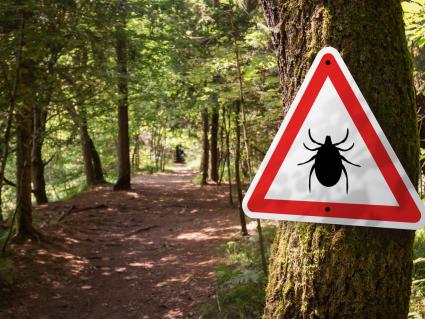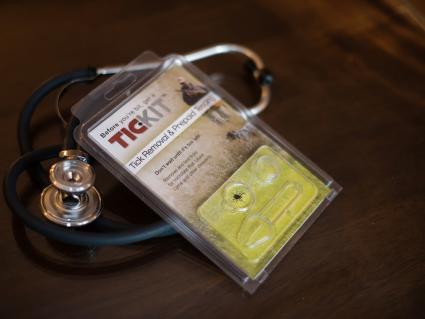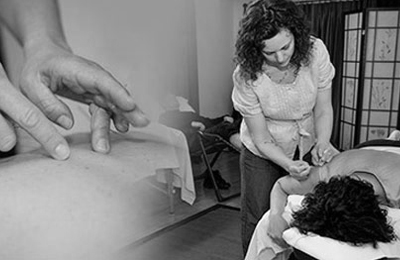Lyme Disease in Children

Lyme Disease in children can be elusive, often dismissed and/or undertreated. As adults it is easy for most to identify and relate symptoms that we may be feeling, however as a child, it can be difficult to put symptoms into words or even voice that something may be wrong. It is important to keep Lyme Disease as a differential diagnosis when a child may have vague complaints or a parent or caregiver notices changes in a child’s behavior. Children with Lyme Disease may exhibit exhibit headache, irritability, fever, unilateral limb pain or joint pain, fatigue, lack of motivation or change in behavior, facial palsy, rash/erythema migranes, lymphadenopathy, myalgia, carditis and aseptic meningitis. These symptoms are all seen fairly “early” in disease manifestation, within a few weeks to months.
Lyme Disease is caused by pathogenic genomospecies of the spirochete Borrelia burgdorferi. This is the most common cause of Lyme Disease in the United States. Less often other genomospecies include Borellia mayonii that is more likely seen in Mid-western states. In Europe and Asia Borellia afzelii and Borellia gariniii are more often seen (Stanek, Wormser, Gray & Strle, 2012).
Children with Lyme Disease may exhibit headache, irritability, fever, unilateral limb pain or joint pain, fatigue, lack of motivation or change in behavior, facial palsy, rash/erythema migrans, lymphadenopathy, myalgia, carditis and aseptic meningitis. These symptoms are all seen fairly “early” in disease manifestation, within a few weeks to months. “Late” manifestations can include any of these symptoms and more commonly joint pain or “lyme arthritis” (Clin. Infect Dis, 2021). Lyme arthritis commonly affects one joint at a time, however multiple joints can also be affected. Knee pain is the most common joint affected in 90% of pediatric cases according to Lantos, Lipsett & Nigrovic, 2016.
It is important to keep in mind a child’s risk for exposure to an endemic area or history of a tick bite in the past. It is not unusualfor children to have a tick bite and never see the tick. It is important to build prevention strategies into a child’s daily routine such as checking prime spots around the hair line or in the hair, behind ears, around edges of clothing or warm places on the body including the groin or arm pits. If you see a tick bite and/or remove the tick, it is important to send the tick in for testing to guide potential treatment.
In early Lyme (within the first few weeks after exposure to a tick), a blood work evaluation may not be helpful in diagnosis. As in adults, early serological testing is not sensitive enough to be helpful with a confirmed diagnosis. For example, in a study including over 200 children with Lyme Disease, only 19% of those had a positive Immunoglobulin (IgG) for BorreliaBurgdorferi at the time of presentation with a rash (erythema migrans) (Gerber MA, Shapiro ED, Burke GS, Parcells VJ, Bell,1996). If Lyme Disease is not recognized and treated early, the spirochete enters the bloodstream and then transfers to the tissues throughout the body, including joints, central nervous system and even the heart (Steere, 1989).
The longer a child has Lyme Disease and the later the testing takes place, it is more likely that the testing will not be as helpful for diagnosis, as the body may decrease its antibody production over time.
Resources
1. Bachman DT, Srivastava G. Emergency department presentations of Lyme disease in children. Pediatr Emerg Care 1998; 14:356.
2. Gerber MA, Shapiro ED, Burke GS, et al. Lyme disease in children in southeastern Connecticut. Pediatric Lyme Disease Study Group. N Engl J Med 1996; 335:1270.
3. Lantos PM, Lipsett SC, Nigrovic LE. False Positive Lyme Disease IgM Immunoblots in Children. J Pediatr 2016; 174:267.
4. Seltzer EG, Shapiro ED. Misdiagnosis of Lyme disease: when not to order serologic tests. Pediatr Infect Dis J 1996; 15:762.
5. Shapiro ED, Gerber MA. Lyme disease. Clin Infect Dis 2000; 31:533.
6. Steere AC. Lyme disease. N Engl J Med 1989; 321:586.
7. Bachman DT, Srivastava G. Emergency department presentations of Lyme disease in children. Pediatr Emerg Care 1998; 14:356.
Related Blog Posts

An Interview with Dr. Stram: How Effective are the Current Conventional Treatments for Lyme Disease?
In this interview, we asked the founder of the Stram Center, Dr. Ronald Stram, how effective current antibiotic protocols are in regard to Lyme disease treatment. Dr. Stram has devoted his career to those suffering from chronic illnesses, specifically tick-borne diseases. Since 2003, the Stram Center has served nearly 10,000 patients suffering from Lyme disease all across the globe. Dr. Stram…Read the Post

Analysis of Lyme: Attachment, Transmission, Stages, Challenges, and Treatment
In this analysis of the current literature and research on Lyme and tick borne illnesses by Dr. Ronald Stram and medical assistant, Ahn Vo. Starting with an overview of its history; tick attachment time and rate of transmission; stages of infection and related symptoms; challenges in Lyme and testing; and antibiotics versus combination therapy. This throughout analysis contains…Read the Post

Herbal Support For Lyme Disease
Lyme disease a bacterial infection caused by Borrelia Burgdorgeri and in late stages, it can be difficult to treat. There is evidence that the Borrelia bacteria persists in tissues and can shift its form or shape in unfavorable host conditions, including a round body or cyst shap1.Different types of antibiotics and herbs have been studied to find the most effective agent that can…Read the Post

Tick Borne Infection and Mental Health
I recently had a patient contact our office with a complaint of a multi-year history of anxiety that started several months after a camping trip. Despite trying many different medications and counseling therapies, their anxiety has been resistant to all attempts at treatment. In addition to the anxiety, the patient had also developed a distinctive “stretch mark like” rash, but the…Read the Post

Using Herbs to Support Lyme Disease Therapies
According to the NY State Department of health, active tick season starts in March for adult ticks and May for nymph ticks. With a milder winter this year, it is likely that some have already had encounters with ticks. Both adult and nymph ticks can carry multiple infections referred to as tick borne Illness. These illnesses include Lyme disease caused by the bacteria borrelia burgdorgeri,…Read the Post
Related Services

Chronic Disease
Nowhere is the need for an integrative approach more apparent than in the management of chronic illness. We are a synthesis of many systems all working together, and when one or more systems become diseased, all of the others will be stressed as well. From physical challenges, to the challenges of everyday living, to a satisfying quality of life, we have to go past seeing that illness in…Chronic Disease
Integrative Medicine
Integrative medicine is the blending of conventional medicine with holistic, complementary, and alternative medicine. Integrative Medicine is defined as healing-oriented medicine that takes account of the whole person (body, mind, heart and spirit), including all aspects of lifestyle. It emphasizes the therapeutic relationship and makes use of all appropriate therapies, both conventional and…Integrative Medicine

Lyme Disease
Lyme Disease Diagnosis and Treatment in Delmar NY and Burlington VT offices At the Stram Center we vow to continue our education on Lyme Disease research, stay up to date on the most effective testing and all the safe available therapies. Moreover, our years of experience in treating patients according to the whole person-integrative medicine approach allows us the most effective way to care…Lyme Disease





















